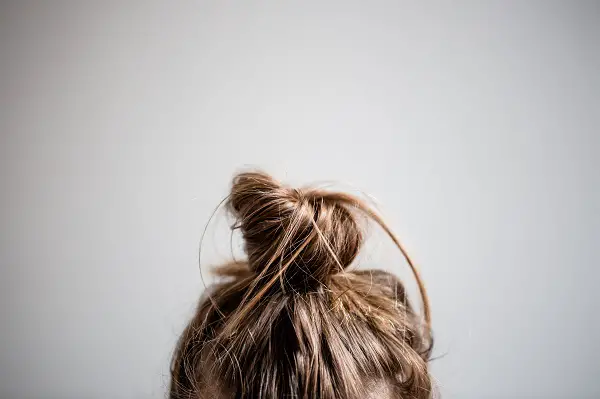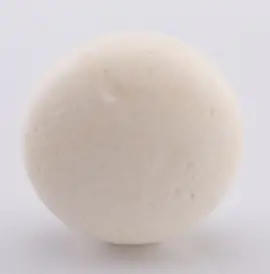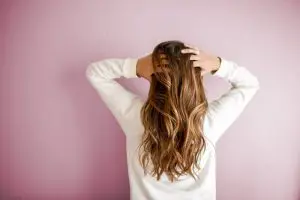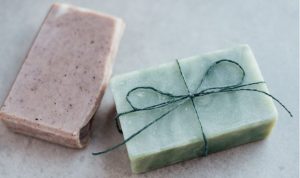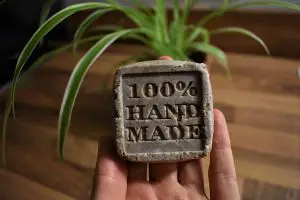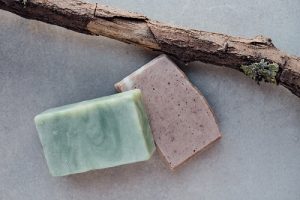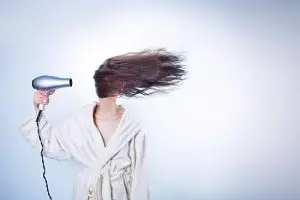Have you decided to switch to a natural hair routine and give the solid shampoo a try? However, the results obtained are not those hoped for. You dreamed of a soft and shiny mane and ended up with hair that looks dirty and poorly rinsed. They have a sticky effect and are even sticky, as if you haven't washed them for several days… Unfortunately, you already want to fall back into conventional liquid shampoos… We understand, but solutions exist to avoid this phenomenon! We will see in this article why solid shampoo leaves your hair sticky.
First of all, we will see why you get sticky hair after solid shampoo. Then we will see the solutions and tips that exist to prevent your solid shampoo from making your hair sticky. And finally in a last step, we will see the best shampoo for sticky hair.
In this section:
Why does solid shampoo make my hair sticky and sticky?
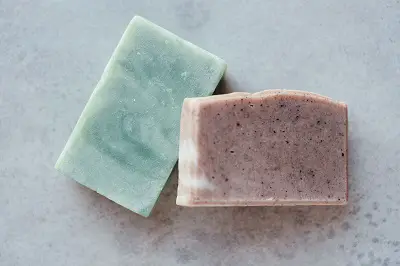
How to explain that your hair has this feeling of badly washed ou poorly rinsed using solid shampoo? It can be explained in three steps:
1 - A brand new hair routine for your hair
When you switch from conventional liquid shampoo to solid shampoo, you completely change the way you wash and care for your hair. They find themselves being nourished and hydrated by new components such as vegetable oils, powders, essential oils, etc; and to be washed by surfactants natural often derived from coconut oil. Your hair will then have to get used to these new components. Sometimes side effects appear as a reaction to these new compounds, such as hair that looks sticky and sticky.
2 - Detoxification from harmful chemicals
Solid shampoos are free from the harmful chemicals found in conventional liquid shampoos. They are rid of sulfates which usually strip hair and scalp. They are detoxified from silicone which smooths the hair fiber and gives the silky effect in the short term but which damages it in the long term. This smoothing is so good that there comes a time when we can no longer do without a product stuffed with silicone. Indeed, this is the only way for the hair to look healthy. Solid shampoos do not contain these harmful chemicals. They will undergo detoxification from these products. However, sometimes this detox leaves the hair sticky.
3 - A hair transition to respect
Your hair, which undergoes a modification, will need a time of adaptation (which can range from a few weeks to several months). During this capillary transition, hair problems may appear as they react to this change. One of the main complications is sticky hair.
However, very often, this phenomenon is found amplified because of poorly performed gestures. The stickiness problem with using solid shampoo often comes from the fact that we tend to want to wash our hair in the same way as when we used our conventional liquid shampoo. Yet there are gestures and habits to adopt that can quickly solve this sticky hair problem. And if the problem persists despite performing these actions, others solutions exist to keep using a solid shampoo without feeling like it makes your hair sticky.
Solutions and Tips for Sticky Hair Problems with Solid Shampoo
To help you get rid of this effect sticky hair, first we will see the right things to do when using your solid shampoo. If that is not enough, and you continue to have sticky hair, then you will need to change it. Here are all our tips and tricks in detail:
Take the right steps when using your solid shampoo against sticky hair
Here is the correct use to adopt when using your solid shampoo to avoid having sticky hair problems.
- First of all, it is possible that the appearance of your sticky hair is the result of a saturation of products on them. To remedy this, make a clarifying shampoo. This allows you to remove the layers of products that accumulate on your hair and to "expose" them. You can buy it or make it at home thanks to baking soda.
- Then you may not not rinse properly your solid shampoo. Indeed, bar shampoo is a product very concentrated in components since it does not contain water like conventional liquid shampoo. So we sometimes have the impression that the solid shampoo rinses poorly but he You may not rinse thoroughly enough. We advise you to gently massage and rub your scalp while rinsing yourself. This gesture allows the excess shampoo which remains attached to the scalp which gives this sticky and sticky effect, to detach it and to make your solid shampoo leave well.
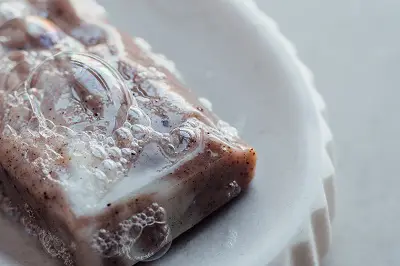
- Lather your solid shampoo in your hands to better distribute the product rather than directly on the scalp. In addition, you will have more ease to rinse it off and avoid the ill-washed effect. If you find that shampoo is missing, do not add more product, simply re-wet your hair lightly so that the solid shampoo foams a little more and distribute over the entire scalp.
- Apply less shampoo to prevent your solid shampoo from leaving your hair sticky. The solid shampoo is compact and hardly foams! The mistake is to want to put more than necessary because we have the impression of not having distributed it well over the hair or of not having put enough. If it is not rinsed sufficiently or well enough, residue can remain on the hair and make it sticky. Very often, it is also at the back of the scalp that the hair takes on this feeling of badly washed and sticky, because it is a part less easy to access and more complicated to rinse. To avoid this, tilt your head forward when rinsing and rinse thoroughly behind the neck.
- Only one shampoo is needed. No need to repeat it 2-3 times. The risk is precisely to use too much solid shampoo and cause a buildup of product on your scalp or on your lengths.
- Rinse your hair with white vinegar or apple cider vinegar diluted with water. Mix a teaspoon of vinegar for 1L of cold water. Use this preparation as a last jet, after having rinsed your hair well. This will allow you to soften the scalp,remove lime residue and solid shampoo and thus avoid leaving your hair sticky. In addition, the vinegar water will rebalance the pH of your scalp, detangle and shine your hair.
- Brush your hair on wet hair if possible, to remove the last residues of solid shampoo. Prefer the use of a boar bristle brush. It gently brushes the scalp and lengths.
Make sure you choose a strong shampoo that matches your hair to avoid the sticky effect
If all of these things don't work and your hair doesn't seem to be getting used to your solid shampoo, it may not be what you are looking for. If after a few weeks you still have sticky hair with your solid shampoo, it's time to change it.
Indeed, it is valid for any other cosmetic product, some solid shampoos are not necessarily suitable for you! Sometimes you have to try several to find the bar shampoo that's right for you. Just because one shampoo didn't work on you doesn't mean another won't work, so we don't give up on the first failure! To help you choose the right shampoo that doesn't make your hair sticky, here are our tips:
- Choose a solid shampoo that matches your hair type. Indeed, solid shampoos have different compositions which correspond to the nature of the hair (oily, dry, colored, thick, fine hair, etc.). Each hair requires particular and personalized care with very distinct properties. It is important to respect your nature to have beautiful healthy hair. So, with a solid shampoo that is suitable for you, you should remove this sticky hair problem.
- Choose a less greasy solid shampoo. If you have this sticky hair problem, you may have taken shampoo that is too greasy for you. That is to say that contains too much natural oils or vegetable butters. These components will nourish your hair more than wash it, they will weigh down your hair. Result: you remove the silicones and sulphates present in liquid shampoos that prevent your hair from breathing, by coating them with natural products but too rich for them, which they will not be able to absorb. Your hair and scalp will be covered with a layer of product that may leave your hair sticky.
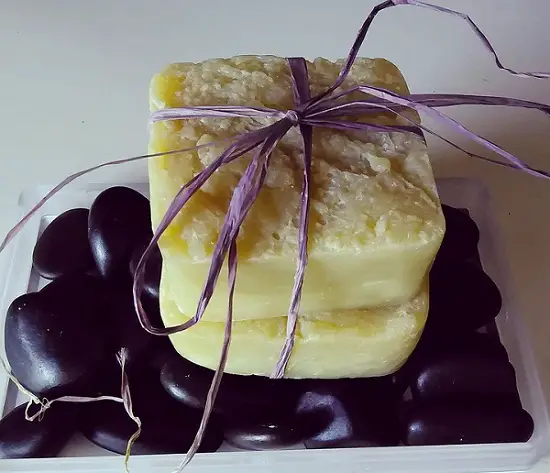
- Favor washing bases (surfactant) douces :
- Sodium Coco Sulphate
- Sodium Lauryl Sulfoacetate
- Disodium Laureth Sulfosuccinate
- Disodium Cocomamphodiacetate
to extremely gentle washing bases :
- Sodium Cocoyl Isethioniate: it is the surfactant which has the best ratio: washing effect + little aggressive
- Coco Glucoside
- Decyl Glucoside
- Disodium Cocoyl Glutamate
- Lauryl Glucoside
- sodium cocoamphoacetate
- Sodium lauryl methyl isethionate
However, these latter surfactants qualified as extremely mild are very often associated with a much more aggressive surfactant. So avoid the following surfactants as much as possible: Sodium Laurylsulfate (LSS), Sodium Lauryl Sulfate (SLS), Sodium Laureth Sulfate (SLS) and Ammonium Lauryl Sulfate (ALS).
Best solid shampoo against sticky hair
It is sometimes difficult to choose from all the solid shampoos on the market. It's easy to find a shampoo that doesn't suit us, and much harder to find your rare gem (unfortunately!).
Among our selection, I can recommend one of the best solid shampoo against sticky hair problems:
Solid shampoo for normal hair - Joya's soaps
Why choose it?
 For normal hair and without essential oils (it is suitable for all hair types).
For normal hair and without essential oils (it is suitable for all hair types).  Composed of mild and very mild surfactant derived from coconut oil.
Composed of mild and very mild surfactant derived from coconut oil. Foams excellently well so no need to add too much!
Foams excellently well so no need to add too much! Solid shampoo with no sticky effect thanks to its excellent rinsability.
Solid shampoo with no sticky effect thanks to its excellent rinsability.

